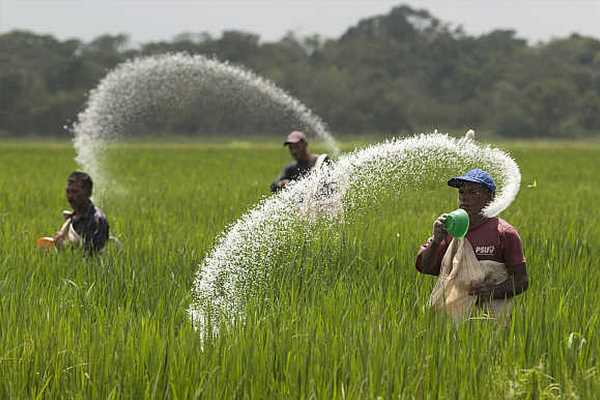The stock of India’s largest agrochemical player — UPL (formerly United Phosphorus) — fell 2.8 per cent in trade.
It was among the top losers in the BSE 100 on Tuesday. Weak 2022-23 (FY23) January-March quarter (fourth quarter, or Q4) performance and muted near-term outlook led to the decline.
The company reported lacklustre growth in revenue of 4 per cent on the back of a price reduction of 3 per cent and volume growth of 1 per cent.
This was offset by a 6 per cent foreign exchange benefit.
The muted top-line performance was due to a dip in North American sales which were down 14 per cent year-on-year (YoY).
The North American market, which accounted for 18 per cent of sales, missed estimates by a fifth on account of a sharp decline in prices of herbicide glufosinate and a delayed Spring.
Latin America (LatAm) — 39 per cent of revenue — posted double-digit growth (11.9 per cent), led by a strong volume performance in the herbicide segment.
Domestic (India) revenue grew 15 per cent on account of bio solutions and herbicide-led growth.
Europe registered a 6.5 per cent rise in revenue, notwithstanding multiple challenges, including a ban on the sale of fungicide mancozeb and herbicide propanil, among others, resulted in flat volumes.
A weak revenue performance and lower gross margins weighed on the operating performance of the company.
Gross margins slid by a sharp 890 basis points (bps) YoY to 40.7 per cent.
The company highlighted that the decline in post-patent product prices with a ramp-up of supply from China, idle capacity costs to achieve a competitive inventory position, and unfavourable regional mix (increase in the share of the LatAm market) significantly impacted contribution margins in Q4.
With the lifting of the Covid lockdown, there was a surge in supplies from China which depressed prices.
Operating profit margins fell 490 bps to 16.4 per cent.
The company has guided for revenue growth of 6-10 per cent and operating profit growth of 8-12 per cent in 2023-24 (FY24), although the first two quarters of the year are expected to be challenging, given the oversupply situation.
Analysts of Kotak Institutional Equities, led by Abhijit Akella, believe that the current environment of falling prices and elevated channel inventories could put pressure on both volume growth and realisations.
A positive for the company is debt reduction. Gross debt came down from Rs 25,870 crore in 2021-22 to Rs 23,000 crore in FY23, while net debt was down to Rs 16,900 crore, from Rs 18,900 crore last year.
The agri-input company achieved a net debt reduction of $440 million, compared to the guidance of $500 million in the October-December quarter of FY23.
Given the disappointing showing and near-term guidance, most brokerages have trimmed their earnings estimates between 13 per cent and 22 per cent for FY24.
While JM Financial Research has cut its profit estimates by 15 per cent as well as its target price, it has maintained a ‘buy’ rating on account of deleveraging and the possibility of value unlocking in the specialty chemical business. Nuvama Research, too, has a ‘buy’ rating on the stock.
“Even as we acknowledge the earnings risk, we anticipate a sustained improvement on the balance sheet, while inexpensive valuations protect downside risk,” observes Rohan Gupta of the brokerage.
Disclaimer: This article is meant for information purposes only. This article and information do not constitute a distribution, an endorsement, an investment advice, an offer to buy or sell or the solicitation of an offer to buy or sell any securities/schemes or any other financial products/investment products mentioned in this article to influence the opinion or behaviour of the investors/recipients.
Any use of the information/any investment and investment related decisions of the investors/recipients are at their sole discretion and risk. Any advice herein is made on a general basis and does not take into account the specific investment objectives of the specific person or group of persons. Opinions expressed herein are subject to change without notice.
Source: Read Full Article

